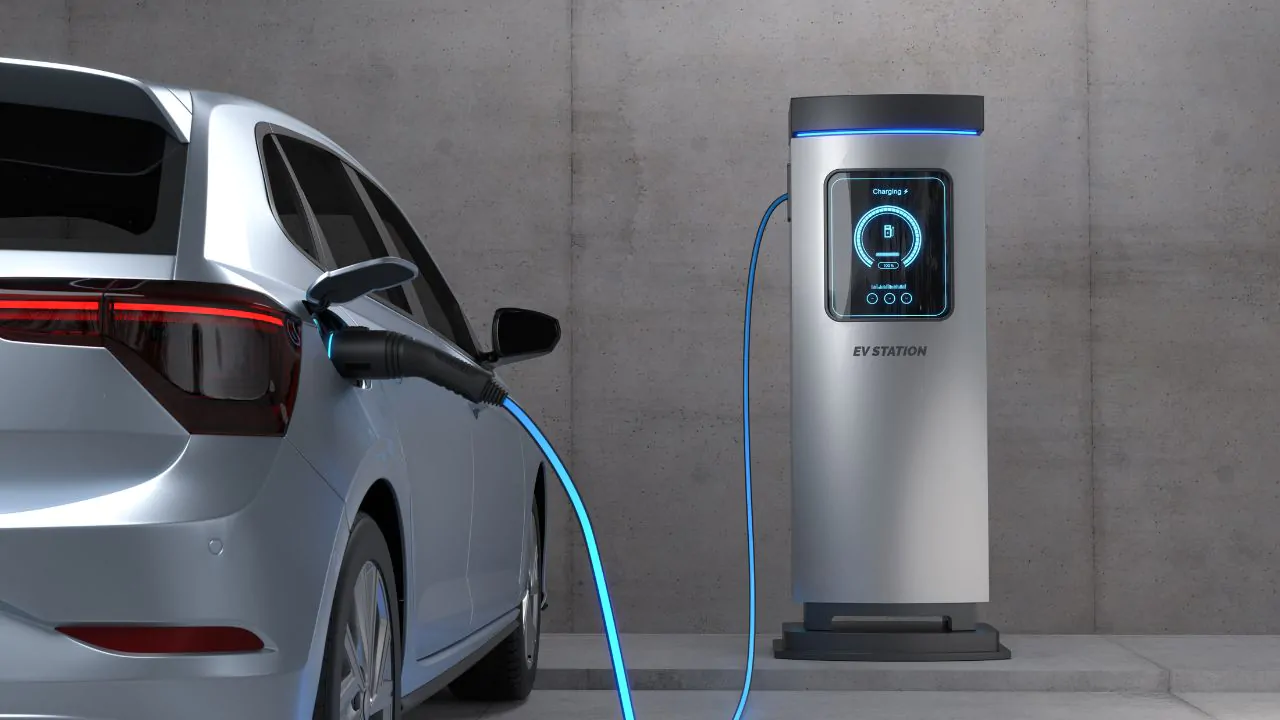There are moments in life that test your nerve on the road in ways you never expect. Last month, during the final week of October, I experienced one such terrifying ordeal whilst driving from Kolkata to Puri. What was supposed to be a peaceful overnight journey turned into a nightmare when my car’s front windscreen suddenly became engulfed in thick, impenetrable fog. For the first time in years of driving, I felt genuinely helpless and vulnerable on a dark highway, forced to pull over in an isolated spot where I waited for over two and a half hours just to regain visibility. That evening changed my understanding of car safety forever, and today I share my experience alongside expert insights to help fellow drivers avoid this dangerous situation.
My Terrifying Windscreen Fogging Experience
It happened unexpectedly on one of those humid October nights when the weather was in transition. The Kolkata-Puri highway was largely empty around midnight when I first noticed a light mist forming on my windscreen. At first, I thought it would clear on its own, but instead, it grew thicker and thicker, obscuring my vision progressively. The temperature had dropped significantly, and the moisture-laden night air was creating the perfect conditions for condensation to form on the inside of my glass.
What made the situation even more frightening was the darkness. With virtually no vehicles around me, a desolate stretch of highway stretching ahead, and visibility reduced to mere metres, I realised I had no choice but to stop the car safely. My initial attempts to clear the fog using the car’s built-in defogger seemed futile. The air conditioner, which I switched on in desperation, took forever to have any effect. I cracked open the windows, but the humid night air simply added more moisture to the cabin rather than helping.
For two and a half gruelling hours, I sat in that car, switching between different ventilation settings, occasionally opening and closing windows, and trying every trick I could think of. The frustration and worry were overwhelming. I was stranded in darkness with limited visibility, uncertain when or how the fog would finally clear. That night, I learned that fogged windscreens are not just a minor inconvenience—they are genuine safety hazards that demand immediate knowledge and action.
Why Do Windscreens Fog Up at Night?
Understanding the science behind windscreen fogging is crucial to preventing it and handling it effectively. Fogging occurs due to a natural phenomenon called condensation, which happens when air containing moisture encounters a significantly cooler surface.
Inside a car, this process is quite straightforward. The air inside your vehicle contains moisture from multiple sources: the breath of passengers, damp clothing, wet shoes, or simply the humidity from outside air that enters the cabin. During night-time driving, especially in humid regions like coastal Bengal or Odisha, the temperature drops considerably. Meanwhile, the glass surface of the windscreen cools down even faster than the cabin air.
When this warm, moisture-laden air inside meets the cooler windscreen glass, the water vapour in that air transforms into tiny liquid water droplets on the glass surface. This is exactly the condensation process. The larger the temperature difference between the inside and outside, and the higher the humidity levels, the faster and thicker the fog forms.
During night drives, this problem intensifies because outside temperatures plummet, especially in areas transitioning from monsoon to winter. Additionally, if a driver has the air circulation set to recirculate mode—where the same humid cabin air is circulated repeatedly rather than fresh air being drawn from outside—the moisture concentration inside builds up rapidly, accelerating fog formation.
Several factors compound this issue. A dirty windscreen, covered in dust or grime on the inside, provides an ideal surface for water droplets to adhere to, worsening fogging. Leaks in the car’s weatherstripping can allow exterior moisture to seep inside. A clogged or poorly maintained cabin air filter prevents proper air circulation and moisture removal. All of these factors contributed to my unfortunate experience that night.

The Science of Two Types of Windscreen Fogging
It is important to note that windscreen fogging can occur in two distinct ways, and understanding the difference is essential for applying the right solution.
Interior Fogging (Winter Problem): This occurs when the inside surface of the windscreen becomes fogged, typically during winter months and cool nights. The warm, humid air inside the cabin meets the cold glass, causing condensation on the inside surface. This was exactly what happened to me during that October night drive.
Exterior Fogging (Monsoon Problem): This occurs when the outside surface of the windscreen becomes fogged, usually during the monsoon or rainy season. This happens when the windscreen temperature becomes colder than the ambient outside temperature due to excessive air conditioning use inside the car. The hot, humid outside air then condenses on the cooler glass surface. Whilst I experienced interior fogging, many drivers in India face both types, particularly in regions with extreme weather variations.
Immediate Actions to Clear a Foggy Windscreen Quickly
If you ever find yourself in the situation I faced, where your windscreen suddenly becomes fogged during a night drive, follow these proven steps to regain visibility as quickly as possible:
Step 1: Activate the Defogger at Maximum Power
Most modern cars come equipped with a dedicated defogger (also called demister) button. Locate it on your dashboard and turn it to the highest setting. The defogger works by directing heated air from your vehicle’s HVAC system directly onto the windscreen surface. This heat causes the condensed water droplets to evaporate rapidly, clearing the fog within minutes. If your car has both front and rear defoggers, switch on both simultaneously for comprehensive fog clearing.
Step 2: Turn on the Air Conditioning Alongside the Heater
This might seem counterintuitive, but combining air conditioning with heating is remarkably effective. Here is why: the air conditioner dries out the humid air inside your cabin by removing moisture, whilst the heat warms the windscreen to clear the fog faster. Set your temperature control to maximum heat, but ensure the AC is also active. This dual approach works significantly faster than heat alone.
Step 3: Disable Air Recirculation Mode Immediately
This is critical. If your vehicle’s ventilation system is set to recirculate air—where the same humid interior air cycles repeatedly—switch this off immediately. Look for a button marked “recirculation” or an icon showing air arrows in a circular pattern. Turning this off allows fresh, drier outside air to enter your cabin, which dramatically reduces interior moisture and speeds up defogging.
Step 4: Slightly Open Your Windows
Cracking your car’s windows open by just an inch or two creates a natural cross-ventilation effect. This allows the humid air from inside to escape whilst drier outside air enters, balancing the moisture levels inside your cabin. However, be cautious not to open windows too wide during winter or extremely cold conditions, as this could make the interior even colder and worsen the problem temporarily.
Step 5: Direct Air Vents Towards the Windscreen
Position your air conditioning vents to point directly at the windscreen rather than towards the faces of passengers. This concentrates the airflow where it is needed most, accelerating the defogging process. Swivel any adjustable side vents to angle toward the glass.
Step 6: Use Microfibre Cloth as a Quick Fix
If visibility becomes dangerously poor, you can wipe the interior windscreen with a clean microfibre cloth to remove initial condensation. However, this is only a temporary measure and should not delay activating your defogger system.
Using these steps in combination, most windscreen fogging can be cleared within five to ten minutes. In my case, had I known these techniques properly, my two-and-a-half-hour ordeal could have been reduced to a mere fifteen-minute inconvenience.
Preventive Measures to Avoid Windscreen Fogging Altogether
Prevention is unquestionably better than cure, and the same principle applies to windscreen fogging. By implementing these preventive measures regularly, you can avoid the dangerous situation I faced:
Keep the Windscreen Interior Clean
Dust, grime, and residue on the inside of your windscreen attract moisture and provide ideal surfaces for fog to adhere. Clean your windscreen’s interior regularly with a microfibre cloth and glass cleaner. This simple habit significantly reduces fogging intensity.
Maintain Dry Conditions Inside the Car
Never leave wet umbrellas, damp clothes, or soggy shoes inside your vehicle. These items release substantial moisture into the cabin air. After driving in the rain, open the windows to allow moisture to escape before closing up the car. If your car has been left in a damp environment, air it out on a warm, sunny day at least once a month to eliminate accumulated moisture.
Use Silica Gel Moisture Absorbers
Place silica gel packets, activated charcoal, or commercial dehumidifying products inside your car on the dashboard or seats. These absorb excess moisture from the air, preventing it from accumulating on your windscreen. Many drivers in India keep small cloth bags filled with silica beads or baking soda inside their cars specifically for this purpose.
Apply Anti-Fog Treatments
A classic and highly effective preventive measure is applying shaving foam to your windscreen. The technique is simple: take a clean, dry cloth and apply a thin, even layer of shaving foam on the inside of the windscreen. Let it sit for five minutes, then wipe it off completely with another cloth. This creates an invisible protective layer that resists condensation buildup. The effect typically lasts for several weeks.
Alternatively, you can create a homemade anti-fog spray by mixing equal parts white vinegar and water, or equal parts rubbing alcohol and water. Spray this solution on the inside of your windscreen and wipe it clean. Reapply this solution every two to three weeks for lasting results.
Maintain Your Car’s Ventilation System
Regular servicing of your car’s air conditioning system and cabin air filter is essential. A clogged cabin air filter restricts airflow, preventing proper moisture removal. Have your AC serviced at least twice yearly, especially before winter and monsoon seasons. A well-functioning HVAC system is your first line of defence against fogging.
Use Fresh Air Mode Regularly
When driving, use the “fresh air” mode instead of constant air recirculation. The fresh air mode continuously brings in outside air whilst maintaining a reasonable cabin temperature. This prevents the buildup of moisture-laden recirculated air.
Essential Tips for Safe Night Driving When Fogging Occurs
Despite best efforts at prevention, fogging might still occur during night drives, particularly in areas with extreme humidity and temperature variations.
Drive Slowly and Cautiously
Reduced visibility requires slower speeds and increased reaction time. Reduce your speed significantly when dealing with fogged windscreens, as your ability to see hazards diminishes drastically.
Use Low Beam Headlights Only
Many drivers instinctively switch to high beams when visibility is poor, but this is counterproductive. High beams reflect off the fog, creating a hazy glare that worsens visibility. Always use low beams for better sight lines when driving through any type of fog or mist.
Maintain Adequate Following Distance
Keep a substantial gap between your vehicle and the vehicle ahead. With reduced visibility, you need extra time to brake safely if the vehicle in front suddenly stops.
Use Roadside Reflectors as Lane Guides
When visibility is severely compromised, focus on the white or yellow roadside reflector markers to maintain lane discipline rather than trying to see the road directly ahead.
Stop Safely If Visibility Becomes Too Poor
Never attempt to drive through thick fog if your visibility is dangerously low. Pull over to a safe location, switch on your hazard lights, and wait for conditions to improve or use proper defogging techniques. Safety always takes precedence over reaching your destination on time.
Useful Products and Household Hacks for Fog Prevention
Beyond your car’s built-in features, several commercial products and household solutions can effectively combat windscreen fogging:
Commercial Anti-Fog Sprays and Wipes
Automotive stores sell specialised anti-fog sprays and wipes designed specifically for car windscreens. These products create a hydrophilic (water-repelling) coating that discourages condensation buildup. Apply as directed by the manufacturer and reapply periodically for sustained effectiveness.
The Shaving Foam Hack
As mentioned earlier, shaving foam is a remarkably effective and inexpensive anti-fog treatment. It costs very little compared to commercial products and works impressively well for weeks after application.
Vinegar and Water Solution
Mix equal parts white vinegar and water in a spray bottle. This solution creates a temporary anti-fog coating. Spray it on the inside of your windscreen and wipe thoroughly. The vinegar smell will dissipate within an hour.
Rubbing Alcohol Spray
Similarly, a mixture of rubbing alcohol and water works effectively as an anti-fog treatment. The alcohol content aids in moisture repulsion.
Silica Gel Packets and Activated Charcoal
Keep several silica gel packets (commonly found in the packaging of new shoes, electronics, or vitamins) inside your car. Alternatively, create small cloth pouches filled with activated charcoal or baking soda. These are highly effective moisture absorbers.
Dehumidifying Agents
Several commercial dehumidifying products designed for cars are available in the Indian market. These are particularly useful during the monsoon season.
Maintenance Practices for Long-Term Fog Prevention
Beyond immediate solutions and quick fixes, certain maintenance practices ensure that fogging remains a rare occurrence rather than a regular problem:
Regular AC Servicing
Have your car’s air conditioning system serviced every six months, or as recommended by your vehicle’s manufacturer. A well-maintained AC system is crucial for moisture control.
Clean Cabin Air Filters
Replace or clean your cabin air filter every three to four months, particularly during dusty seasons. A clean filter allows proper airflow and moisture removal.
Inspect Weather Stripping
Check the rubber seals around your car doors and windows for cracks or deterioration. Damaged weather stripping allows moisture to seep inside the cabin. Replace damaged seals promptly.
Air Out Your Vehicle Regularly
Park your car in an open area on a warm, sunny day and open all windows and doors for at least thirty minutes monthly. This allows accumulated moisture inside the cabin to escape.
Interior Cleaning
Regularly vacuum and clean your car’s interior to remove dust particles that can trap moisture and promote fogging.
Final Thoughts: Staying Prepared for Safe, Fog-Free Driving
My experience on that foggy October night was indeed a harsh and frightening reminder of how unpredictable and hazardous windscreen fogging can be for drivers, particularly during night drives on lonely stretches of highway. However, that ordeal also taught me valuable lessons about preparedness, knowledge, and proactive vehicle maintenance.
The fear and helplessness I felt can be entirely avoided through proper understanding and preventive action. With the right knowledge about how your car’s defogger and ventilation systems work, regular application of anti-fog treatments, maintaining dry cabin conditions, and timely vehicle servicing, windscreen fogging ceases to be a frightening emergency and becomes merely a minor inconvenience that can be resolved within minutes.
For all drivers traversing India’s roads—particularly those navigating the humid coastal regions, monsoon-affected areas, or routes that experience significant temperature fluctuations between night and day—a fog-free windscreen is not merely a convenience or a comfort feature. It is a fundamental safety requirement that can mean the difference between a safe journey and a potential accident.
I urge every driver to take these precautions seriously. Keep your car’s ventilation system well-maintained, prepare preventive treatments during seasonal transitions, understand your vehicle’s defogging features thoroughly, and never hesitate to pull over safely if visibility becomes dangerously compromised. The extra time spent on prevention and preparation is infinitely worth the safety, peace of mind, and worry-free journeys you will enjoy.
Remember, a clear windscreen and good visibility are not negotiable aspects of safe driving. They are absolute necessities. Drive safe, drive alert, and ensure that your windscreen remains crystal clear throughout every journey, day or night.
Must read: Mahindra Bolero Neo 2025: The Rugged SUV Gets a Modern Makeover — How Does It Compare to the TUV300?













